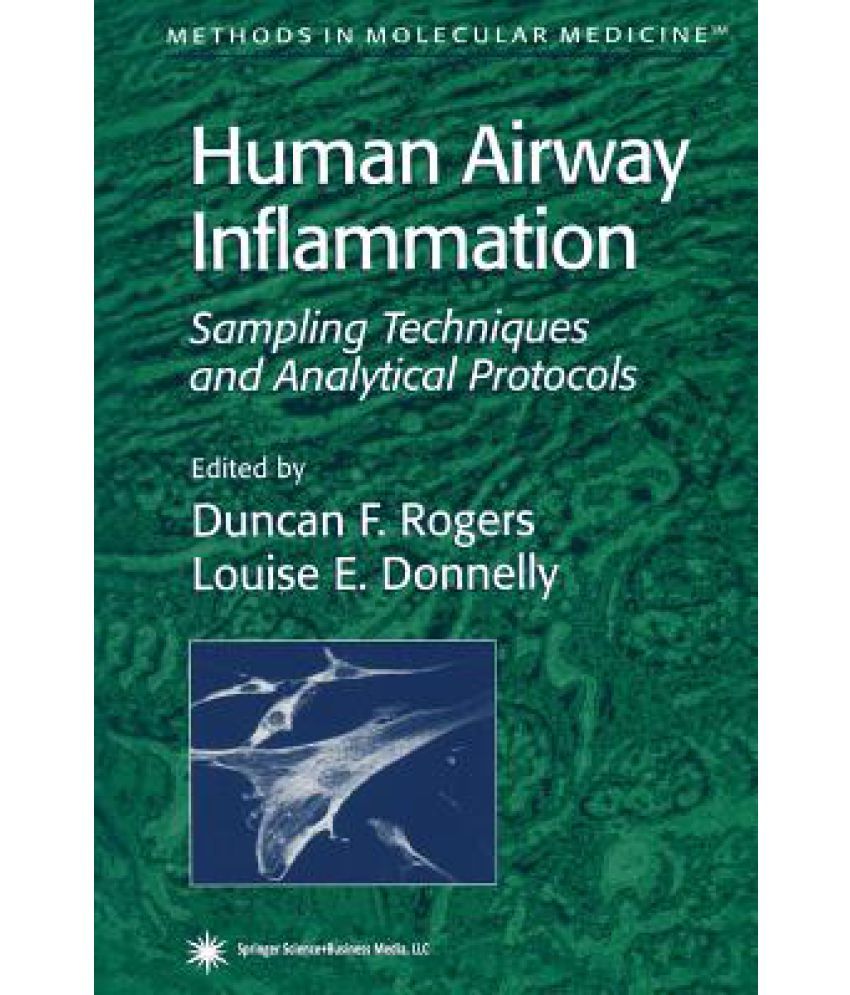Something went wrong. Please refresh the page and try again.
Something went wrong. Please refresh the page and try again.
Notifications can be turned off anytime from settings.
Item(s) Added To cart
Qty.
Something went wrong. Please refresh the page and try again.
Something went wrong. Please refresh the page and try again.
Exchange offer not applicable. New product price is lower than exchange product price
Please check the updated No Cost EMI details on the payment page
Exchange offer is not applicable with this product
Exchange Offer cannot be clubbed with Bajaj Finserv for this product
Product price & seller has been updated as per Bajaj Finserv EMI option
Please apply exchange offer again
Your item has been added to Shortlist.
View AllYour Item has been added to Shopping List
View AllSorry! Human Airway Inflammation is sold out.


You will be notified when this product will be in stock
| ||||||||||||||
Learn More about the Book
Rubor (redness), tumor (swelling), calor (heat), and dolor (pain) are the classical signs of inflammation. These features are obvious in the skin, where injury or disease causes flare, wheal, and painful burning sensations. Vasodi- tation underlies the flare and heat, plasma exudation the swelling, and acti- tion of sensory nerves relays pain. In chronic conditions, skin biopsies show inflammatory cell infiltrate. Inflammation is not unique to the skin and contr- utes to disease and repair processes in other organ systems in the body. From the viewpoint of this volume, lung inflammation is now recognized as central to the pathophysiology of a number of severe respiratory conditions, the two most common being asthma and chronic obstructive pulmonary disease (COPD). In asthma, and to a lesser extent COPD, there is evidence of vasodilatation, with congestion of blood vessels accompanied by reddening of the airway mucosa, and of plasma exudation, leading to swelling of the airway wall. Similarly, although less pronounced than in the skin, there is evidence of pain, for example, the - pleasant chest sensations associated with asthma attacks. Understanding the pat- genesis of airway inflammation will enable rational design of drugs to effectively treat conditions such as asthma and COPD. However, whereas immediate access to the skin facilitates investigation of disease processes, the lung, although "open to atmosphere," is much less accessible. Consequently, the investigation of lung inflammation is usually indirect. Thus, a wide variety of research techniques are used.
On the Back Cover
Airway inflammation is now recognized as central to the pathophysiology of several major respiratory conditions-the two most common being asthma and chronic obstructive pulmonary disease (COPD). In Human Airway Inflammation: Sampling Techniques and Analytical Protocols, experienced basic and clinical investigators describe a wide range of readily reproducible methods for sampling, isolating, and culturing all of the major inflammatory cells involved in the pathophysiology of asthma and COPD. The collection techniques detailed here involve biopsy and sampling of airway liquids such as sputum and exhaled gases such as nitric oxide. Also provided is a full range of methods for the isolation and characterization of cells and for the measurement of many of the major inflammatory markers, along with protocols for measuring the inflammatory mediators and enzymes released during lung inflammation. Each user-friendly method contains all the essential step-by-step elements the researcher must navigate from sample collection to analysis, and includes notes on how to avoid problems. Among the more advanced techniques are the measurement of exhaled hydrocarbons and F2 isoprostanes, granulocyte pharmacodynamics in whole blood measured by flow cytometry, and tracing mediator trafficking in eosinophils using confocal microscopy.
Comprehensive and highly practical, the methods presented in Human Airway Inflammation: Sampling Techniques and Analytical Protocols provide today's basic and clinical researchers with all the major techniques for investigating airway inflammation, and powerfully illuminate many novel targets for emerging drugs.
Review Quotes
1. "Comprehensive and highly practical, the methods presented in this volume provide today's basic and clinical researchers all the major techniques for investigating airway inflammation, and powerfully illuminate many novel targets for emerging drugs." - Journal of Investigational Allergology and Clinical Immunology
The images represent actual product though color of the image and product may slightly differ.
Register now to get updates on promotions and
coupons. Or Download App